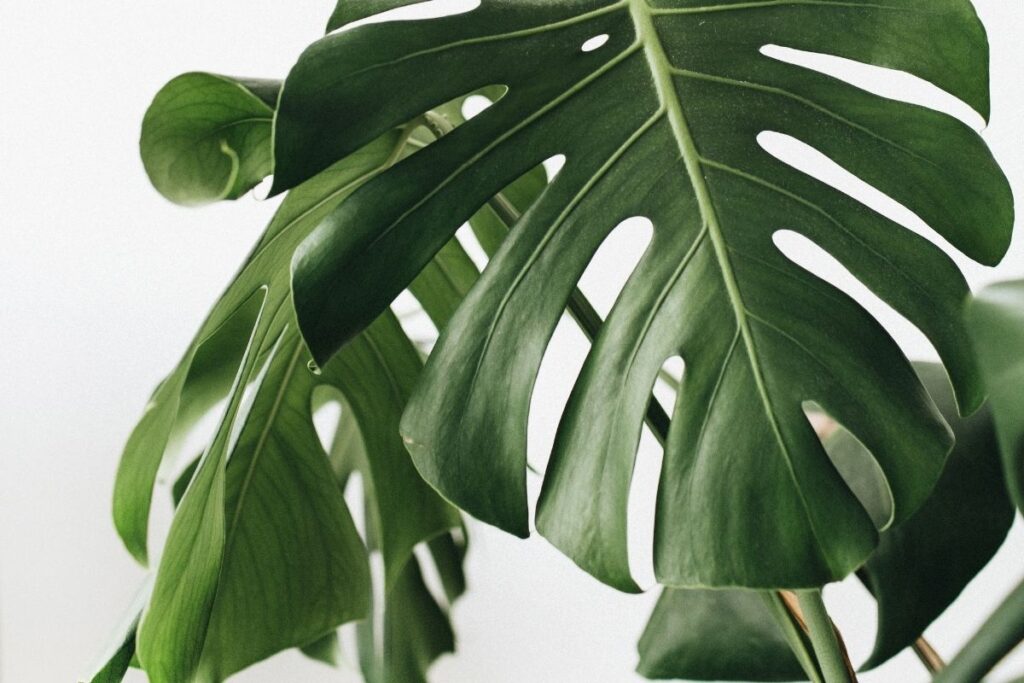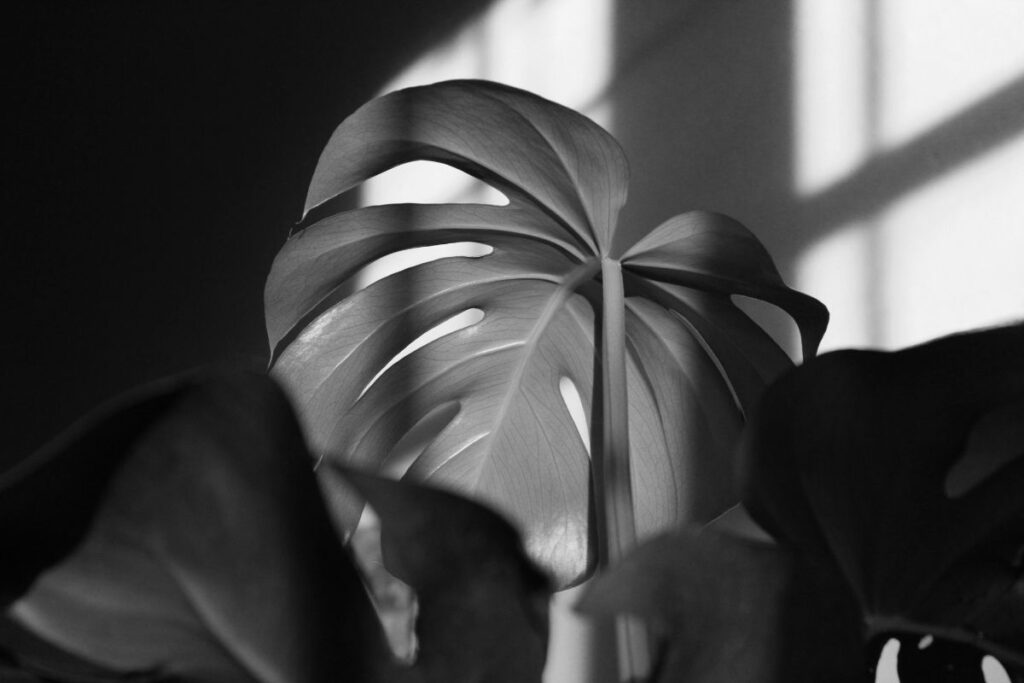Monstera plants have the most stunning foliage imaginable. These plants are among the most popular houseplants in North America, and their large, pendant leaves are great for adding color to a shady area during summer months. In this article, let’s talk about droopy monstera how to fix it!

The Monsteras are not only beautiful, but they’re also easy to grow and care for. For anyone who is unfamiliar with how this plant looks – the monstera leaf is a gorgeous, broad leaf that makes it perfect for a centerpiece.
The most popular variation is the Monstera Deliciosa, which is also called the Swiss cheese plant, despite hailing from Mexico.
If you have one of these beautiful indoor plants, but it seems to be suffering from limp or drooping leaves, you’re in the right place! This can be a common issue, and there are a number of potential causes.
Chances are, your prized plant is looking a little worse for wear, and you need to find out what the problem is. Well, keep reading to find out!
What Causes Monstera Leaves to Droop?
Limp and drooping monstera leaves could be caused by a couple of things. We will go through each of them below and also identify how you can remedy the situation.
By the end of this post, you should have a good idea of what issue your plant is facing, and know how to fix it.
Overwatering
Overwatering plants is a common issue that people experience without even realizing it. Overwatering your monstera can result in root rot if you don’t give it enough space to absorb moisture – so you really need to pay attention when watering.
When you water your plants, use a plant food (not fertilizer) that has been specifically designed for this purpose. It will provide nutrients to help your plants continue growing.
If you are using tap water, make sure that you only add rainwater to the soil instead. Too much water can cause roots to rot. Don’t let the leaves get wet either – that can damage them.
When you overwater your monstera plant, its leaves will become limp and start to yellow. This discoloration is likely to start on the lower leaves on the plant, and could show in dried-out, brown patches near the tips of the leaves.
If your plant has root rot, you will probably be able to smell it emanating from the soil. The overwatering issue is also common in plants that are too small for their plant pots.
Often, the pots will become waterlogged because the plant is unable to soak it up. You should make sure that your plant is in a pot that is the correct size for it.
If you are worried that your monstera is overwatered, you can either leave it until the top third of the soil becomes, or three inches of soil is dry, or repot it.
Repotting shouldn’t be done unless absolutely necessary, but if the soil is too waterlogged and the pot too large, it may be the best option. Soil moisture can only be reduced over time or by introducing fresh soil to the pot.
Waterlogged soil can be a common issue if there is no adequate drainage in the pot. Ensure that there are drainage holes, or at least one drainage hole, to get rid of any excess water.
Otherwise, you will be dealing with drooping leaves again. No one wants to deal with a monstera fungal infection, so keep an eye on your watering schedule.
Related: How to Care for Monstera Plants? All the Answers and More!
Underwatering
Underwatering will also product yellowed leaves, or at least sad, droopy leaves, thanks to the lack of water. Since monsteras come from tropical climates, they do need water, and quite a lot of it.
The easiest way to figure out when you need to water your plant is by testing the soil with your finger to see if it’s dry. Bone dry is a clear sign your plant needs watering.
You could also use a meter to test this, but it isn’t always accurate. Water your plants on a regular basis, but not too often. Once a week should do.
There are two ways to water your monstera – from the top or bottom. To water your plant from the bottom, simply fill a basin with some water and let your plant sit in it for no longer than 20 minutes.
The soil will gradually absorb the water from the bottom! If you want to water from the top, add small amounts of water at a time so that it doesn’t just run straight through the potting mix.
Allow time for the plant to absorb the water, then give it some to drain all the excess water. It’s important to allow this so that root rot doesn’t occur.
Too Much Light
Because monsteras hail from tropical forests and regions, they don’t like a lot of direct light. Allow your monstera to get plenty of indirect light, and very limited direct light.
Too much direct sunlight will result in brown spots forming on the leaves. If you start to notice this, find a spot that is better suited to your beloved plant.
Brown spots are often the first warning before your plant’s health gets worse.
Too Little Light

Likewise, too little light will also be detrimental to your plant’s health. Drooping leaves are typically a result of inadequate lighting.
If you notice this, find a spot that has a little more light to get your monstera looking its best again. A spot with dappled shade and bright, indirect light is perfect.
Too little light will result in your monstera’s growth being stumped, and it will never get very large. As these plants can grow to massive sizes, you should allow enough natural sunlight so that it can get to a good size. Natural light is the key to a happy and healthy plant, but direct sun can also destroy it.
Temperatures
Temperature stress can also be the reason your monstera’s leaves are sad and droopy. Although these plants typically do pretty well in a variety of temperatures, their ideal temperatures are between 64-84 °F (18-29 °C). As a result, the winter months can be especially unpleasant for these plants.
Cold temperatures are a monstera killer. Because of this, you should never place your plant in an area where there are cold drafts. Keep your plant in a protected spot where there are no extreme temperature fluctuations.
Placing them near heaters or radiators could be beneficial if you live in a cold climate, but you may need to mist them frequently to make up for the humidity loss.
Related: The Best and Proven Ways of Propagating Monstera Deliciosa Plant
Fertilizer Issues
Since monsteras can reach impressive sizes, they need the nutrients to match. These plants should have access to fertilizer added regularly. You can fertilize once per month, and feed your plants every other week.
This means that you should check the level of nutrition daily. In addition to providing vitamins and minerals, fertilizers help your plant produce flowers and fruit, which makes them beautiful as well as nutritious! Be sure to provide lots of calcium, magnesium, potassium, nitrogen and phosphorus.
However, you need to be careful when fertilizing. Too much fertilizer can lead to root burn, which can do some serious damage to your plant.
Any fertilizer built up should be dealt with efficiently so that it doesn’t cause any problems. If you think you have overdone it, you can flush the soil with clean water for a couple of minutes.
Doing this will help the fertilizer get washed from the soil and dissolve it. However, if this doesn’t work, or you want to try another way, you can repot your plant.
Similarly, a nutrient deficiency will lead to sad, droopy leaves, too. To avoid the dreaded yellow leaf, you should stick to a fertilizer regimen, and stick to it.
That way, you shouldn’t be able to overdo it and potentially harm your plant.
Pests
Pests can also pose an issue to your monstera. Common pests include aphids, spider mites, mealy bugs, white flies, thrips and whiteflies.
When dealing with pest infestations, you should consult with a professional if you are unable to get rid of them yourself.
You can tell if your monstera is suffering from an infestation of spider mites if its leaves are yellowed around the edges, or small brown or yellow spots appear on the leaves.
You can combat your pest problem by using things such as neem oil to deter insects.
Frequently Asked Questions
What Potting Soil Should Be Used For A Monstera?
The ideal potting soil for a monstera plant is a mix of peat moss or coco coir, perlite, and pine bark at a ratio of 1:1:4. A slightly acidic pH is ideal for these plants, as long as it is between 5.5-6.5.
Are Monsteras Hardy Plants?
Monsteras are hardy plants (they don’t need a greenhouse during the winter months) and they adapt to a wide range of temperatures. They grow best in a temperature range between 64-84 °F (18-29 °C).
How Do You Tell If Your Monstera Has Rotten Roots?
You can tell your monstera has rotten roots if they become discolored black or tan and start to rot.
They appear to sag or curve down towards the center of your pot, and a bad small could come from them. The leaves will start to become discolored, too.
How Much Light Do Monsteras Like?
Monsteras like bright, but indirect sunlight. They also need ample shade during the hottest part of the day.
Don’t place your monstera in direct sunlight because although it may seem tempting, it won’t be good for your growing baby.
Do Monsteras Like Humidity?
Monstera plants typically like humidity levels above 40%. Humid environments help them stay healthy as it replicates their natural habitats.
If there is a lack of humidity, you may need to occasionally mist your plant.
Final Thoughts
Monstera plants are incredible things to have in your home. From the leaf tips to the beautiful shapes and colors, they are a pleasure to have around. Unfortunately, many people do not know how to properly take care of these amazing plants.
Hopefully by reading through this post, you will have a better idea of what to look out for with your monstera. There are a lot of warning signs that your plant will show you as soon as something isn’t right, and it’s up to you to see and understand it.
Editor’s Recommendations
Monstera ‘Albo’: 7 Reasons Why It Is Expensive and More Information







